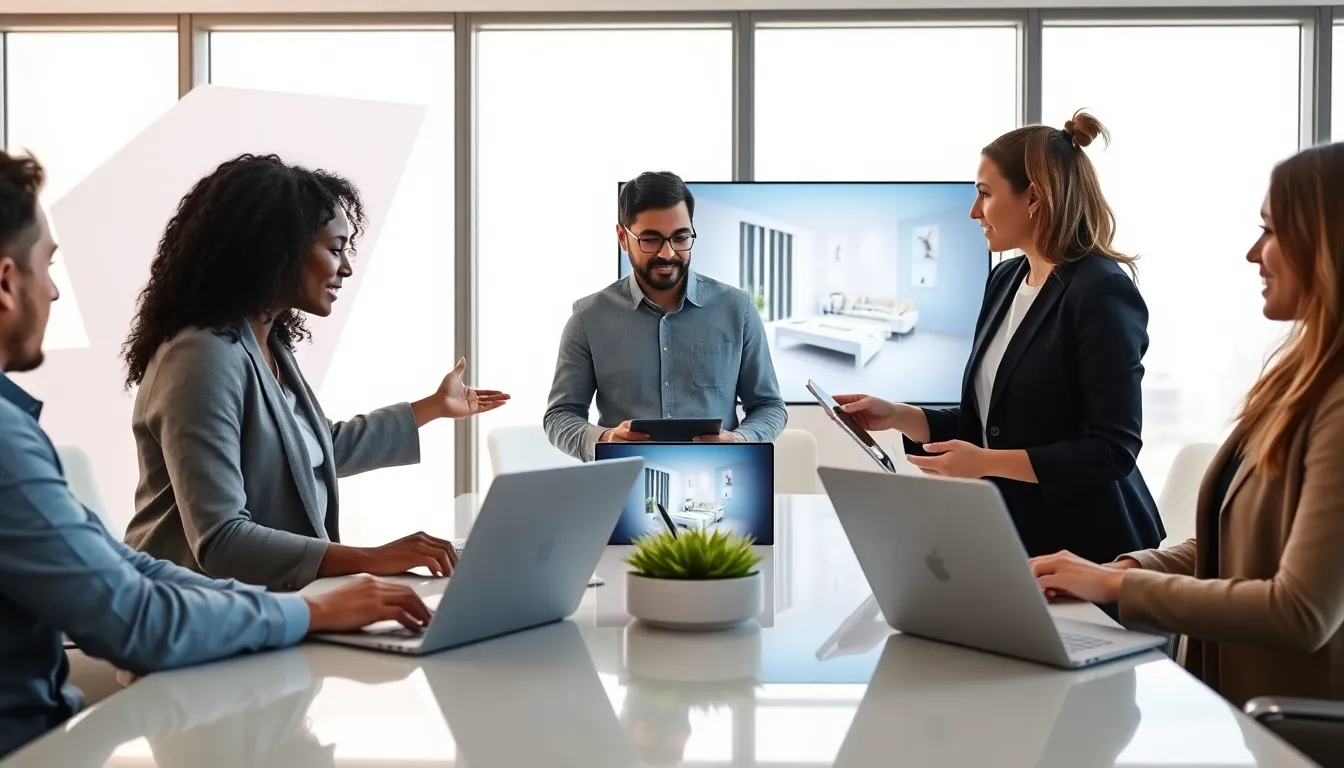Table of Contents
ToggleImagine turning that dimly lit dungeon you call an office into a sunlit paradise with just a few clicks. Does it sound like magic? Well, it’s not, it’s called a lighting layout tool. In today’s world, where ambiance matters more than ever, these tools are the superheroes of the design process. They help anyone from DIY enthusiasts to professional designers create crafts that not only illuminate spaces but also enhance them. So, buckle up as we jump into the intriguing realm of lighting layout tools, where creativity meets practicality and indoor lighting dreams come alive.
Understanding Lighting Layout Tools

Lighting layout tools are software applications designed to streamline the process of lighting design. These intuitive platforms grant users the ability to visualize and manipulate light placements within any given space. Whether it’s a cozy living room or a sprawling office complex, these tools possess the magic to change how light interacts with architectural features.
Traditionally, creating a lighting layout required extensive knowledge of lighting theory and perhaps even a trigonometry degree, or at least it felt that way. But with modern lighting layout tools, you can easily adjust light fixtures, choose color temperatures, and model the effects of natural light. Simply put, these applications are game changers.
Also, they cater to various skill levels. Whether it’s novice designers experimenting with their first home renovation or seasoned architects working on large-scale projects, a lighting layout tool makes collaboration smoother than ever.
Benefits of Using a Lighting Layout Tool
The benefits are as bright as a well-placed chandelier. Here are some key advantages of using a lighting layout tool:
- Enhanced Visualization: Users can see how different types of lighting affect spaces before making any installation decisions. This means fewer regrets down the line.
- Time Efficiency: Who has time to waste? These tools allow for rapid modifications and assessments, speeding up the entire design process.
- Cost Savings: By avoiding costly mistakes, less money is wasted on unnecessary fixtures or incorrect installations.
- Collaboration: These platforms help seamless communication among team members. Everyone can stay on the same page, resulting in a cohesive design.
- Environmentally Friendly Options: Many tools allow designers to factor in energy-efficient lighting solutions and maximize natural light, promoting sustainability.
Key Features to Look For
When selecting a lighting layout tool, it’s essential to consider several key features to ensure it meets your needs:
- User-Friendly Interface: A clean, intuitive design helps users jump right in without feeling overwhelmed.
- Customization Options: The ability to adjust settings based on personal preferences is vital to creating a unique lighting plan.
- 3D Visualization: Interactive 3D models allow users to experience their lighting choices in a realistic manner.
- Integration Capabilities: Look for tools that integrate seamlessly with other design software, because who likes switching between different applications?
- Real-Time Collaboration: A good tool will allow multiple users to modify plans simultaneously, making it perfect for teamwork.
Types of Lighting Layout Tools Available
There’s a buffet of lighting layout tools available, each catering to different needs:
- Web-Based Tools: Perfect for those who prefer access from any device without installing software. Just log in and start designing.
- Mobile Apps: These applications are ideal for on-the-go designers. Easily sketch out ideas and light placements right from your phone.
- Desktop Software: Advanced tools that offer complex features and capabilities, suitable for professionals handling extensive projects.
- Cloud-Based Solutions: Collaborate in real-time and store designs securely online. It’s like having your design studio in the cloud.
Tips for Effective Lighting Design
Creating a stunning lighting design is an art form, and here are some tips to make yours shine:
- Layer Your Lighting: Combine ambient, task, and accent lighting for the best results. Each layer serves a unique purpose, enhancing both aesthetics and functionality.
- Know Your Space: Assess the natural light available in a room before selecting fixtures. This helps determine where artificial lighting is necessary.
- Experiment with Color Temperature: Different color temperatures create distinct moods. Warmer tones evoke coziness, while cooler tones can energize the room.
- Consider Scale and Proportion: Ensure that light fixtures match the size of the room and furnishings. Small lamps in large rooms can look lost, while oversized fixtures might overwhelm the space.
- Seek Feedback: Don’t shy away from asking others for their opinions. Sometimes, a fresh pair of eyes can provide invaluable insights.
Case Studies: Successful Implementations
Real-world examples often provide the best insights, so here are a couple of case studies demonstrating the power of lighting layout tools:
- A Boutique Hotel Revamp: A popular boutique hotel decided to renovate its lobby. Using a lighting layout tool, the designers implemented a layered lighting approach, incorporating chandeliers, floor lamps, and wall sconces. The result? A welcoming, Instagram-worthy space that increased customer satisfaction and foot traffic.
- Corporate Office Transformation: An architectural firm used lighting layout tools to redesign their office space. They used natural light and energy-efficient fixtures to minimize costs while improving employee morale. The outcome showcased how effective lighting can drastically change workplace dynamics.




